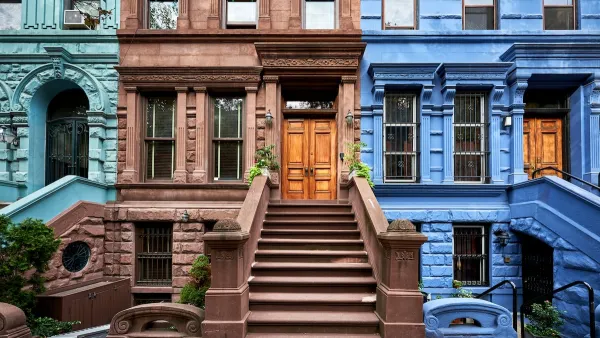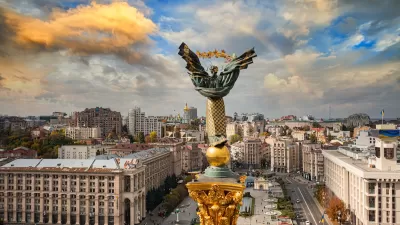Leonardo Da Vinci gets credit for many inventions and creative breakthroughs, but his contributions to the theory of city making gets less credit.

Leonardo Da Vinci died 500 years ago on May 2, and Allesandro Melis writes to describe the great thinker and artist's role in the birth of urbanism in the 15th century.
"Although the Renaissance is renown as an era of incredible progress in art and architecture, it’s rarely noted that the 15th century also marked the birth of urbanism as a true discipline," according to Melis. Da Vinci was one of the thinkers contributing to this nascent field of intellectualism. "Around 1486—after a pestilence that killed half the population in Milan—Leonardo turned his thoughts to urban planning problems. Following a typical Renaissance trend, he began to work out an 'ideal city' project, which, due to its excessive costs, would remain unfulfilled."
Melis shares a reconstruction of da Vinci's work on the subject of a new city along the Ticino River, as collected in Paris manuscript B and Codex Atlanticus. Among numerous innovative propositions, "the true originality of Leonardo’s vision was its fusion of architecture and engineering," according to Melis. "Leonardo made designs for extensive hydraulic plants to create artificial canals throughout the city. The canals, regulated by locks and basins, were supposed to make it easier for boats to navigate inland and transport goods."
"Leonardo also thought that the width of the streets ought to match the average height of the adjacent houses: a rule still followed in many contemporary cities across Italy, to allow access to sun and reduce the risk of damage from earthquakes."
Melis concludes by describing da Vinci's ideas as relevant in contemporary times, as well as models for the future of urban planning.
FULL STORY: The Urban Planning Vision of Leonardo da Vinci

Maui's Vacation Rental Debate Turns Ugly
Verbal attacks, misinformation campaigns and fistfights plague a high-stakes debate to convert thousands of vacation rentals into long-term housing.

Planetizen Federal Action Tracker
A weekly monitor of how Trump’s orders and actions are impacting planners and planning in America.

San Francisco Suspends Traffic Calming Amidst Record Deaths
Citing “a challenging fiscal landscape,” the city will cease the program on the heels of 42 traffic deaths, including 24 pedestrians.

Defunct Pittsburgh Power Plant to Become Residential Tower
A decommissioned steam heat plant will be redeveloped into almost 100 affordable housing units.

Trump Prompts Restructuring of Transportation Research Board in “Unprecedented Overreach”
The TRB has eliminated more than half of its committees including those focused on climate, equity, and cities.

Amtrak Rolls Out New Orleans to Alabama “Mardi Gras” Train
The new service will operate morning and evening departures between Mobile and New Orleans.
Urban Design for Planners 1: Software Tools
This six-course series explores essential urban design concepts using open source software and equips planners with the tools they need to participate fully in the urban design process.
Planning for Universal Design
Learn the tools for implementing Universal Design in planning regulations.
Heyer Gruel & Associates PA
JM Goldson LLC
Custer County Colorado
City of Camden Redevelopment Agency
City of Astoria
Transportation Research & Education Center (TREC) at Portland State University
Jefferson Parish Government
Camden Redevelopment Agency
City of Claremont





























